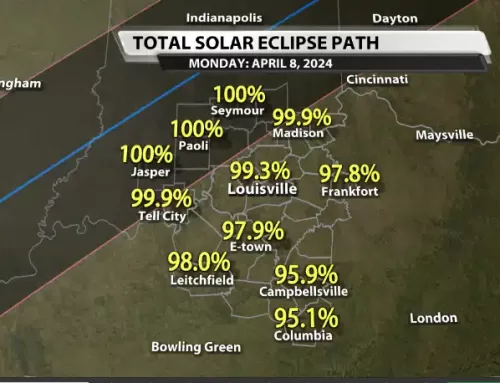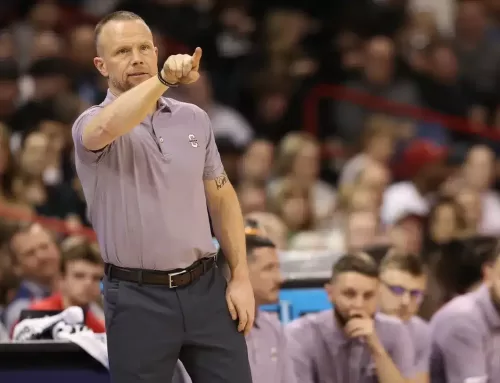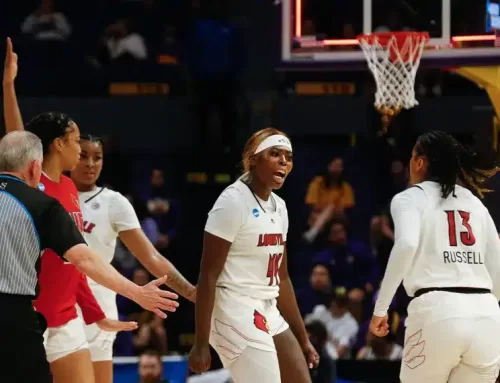By Phillip Lentsch–
After all of the controversy the University of Louisville faced during the early months of 2016, the removal of the Confederate statue on U of L’s campus only fanned the flames.
On April 29, city workers began dismantling the Confederate monument following public statements from both Louisville Mayor Greg Fischer and former U of L President James Ramsey, in which they supported the removal of the statue.
However, the past three months have been bogged down with court proceedings, protests and disagreement about where the statue should be relocated. As of press, the monument still stands on U of L’s campus, but according to the Commission on Public Art, a new spot will be found soon.
Here’s a timeline of notable events related to the statue’s controversial removal, beginning with Fischer and Ramsey’s announcements.
April 20 – Ricky Jones, Pan-African studies chair, published an editorial in The Courier-Journal calling for the removal of the Confederate monument on U of L’s campus. Jones said that any symbols or statues glorifying the Confederacy were “representations of hate, emptied-out ideas of racial superiority, inhumanity and devilishness.”
April 29 – Fischer and Ramsey held a press conference at the statue, saying they support the removal and relocation of the Confederate monument. Ramsey concluded that following the statue’s removal, the median between Second and Third Street will be replaced with a new lane to help traffic flow to the Speed Art Museum.
“It is another step of progress for everyone to come and feel welcome here in our city,” Fischer said. “There are reasons for this monument to not be here on public property.”
April 29 – Hours after the announcement, a group of protestors formed around the monument. One protestor held a poster reading “Racist Ramsey,” while another posted a Confederate flag and upside-down American flag on the fence surrounding the monument.
Former Army sergeant Mark Morgan stood in protest saying “history is being erased.”
“Soldiers don’t fight for political reasons. We fight for the men and women around us. These men are the same way,” Morgan said.
May 2 – Three days after the announcement, a Jefferson County judge temporarily blocked the motion to relocate the monument via a restraining order.
Former Republican congressional candidate Everett Corley filed the suit on May 2 to block the statue’s removal, calling it a “political version of book burning.” Corley filed on the grounds of irreparable harm to himself and the community.
May 24 – Jefferson County Attorney Mike O’Connell filed a motion to continue the removal of the Confederate monument. This was in response to the May 2 restraining order brought against Mayor Fischer by Corley. O’Connell stated that the statue’s location is controlled by Louisville Metro, giving Fischer the power to remove it.
May 25 – Jefferson County Circuit Court Judge Judith McDonald-Burkman lifted the restraining order that was filed against Fischer on May 2. Representatives from Sons of Confederate Veterans and United Daughters of Confederates testified for the statue to remain. Emphasizing the importance of law over emotion, and saying there was not reasonable evidence to prove the monument belonged to the state, McDonald-Burkman struck down the plaintiffs’ lawsuit and motion for an injunction.
“The mayor said from the very beginning that it’s going to be dismantled carefully. They’re bringing in national experts to do this,” O’Connell said after the hearing. “It will be preserved until he finds a suitable place to relocate it and re-erect it.”
June 4 – A petition on Change.org proposed a statue of Muhammad Ali – who died June 3 – to replace the Confederate monument following its removal. Written by Molly Shah, the petition gathered over 700 signatures and was delivered to Fischer and Ramsey.
“Since U of L has decided to remove the blight that is the Confederate statue on campus, what better to replace it than a statue in memory of Louisville’s greatest son, Muhammed Ali,” the petition read.
June 8 – The first panel was held for the discussion of the Confederate statue’s removal, with high-profile speakers on the issue in attendance. Jones, activist Ed Springston and preservationist Martina Kunnecke served as the three panel speakers, debating the merits of the statue’s removal and possible sites for where it could be relocated.
After opening statements, the debate sparked as Jones and Springston defended intentions behind the debate. Jones defended against claims calling him a terrorist online, blaming the aggression on possibly racist motivations.
“To call me or my people terrorists, or terrorists sympathizers…that is one of the greatest erasures of history ever,” Jones said.
Springston denied claims that he and fellow plaintiffs were racist, saying “It has nothing to do with white or black,” and that they filed the suit against to preserve history.
Springston noted increasing progressive actions in Louisville, saying they have contributed to attempts to erase history. Kunnecke also defended the statue, saying she is “appalled” by the number of historical monuments in Louisville being torn down, and believes the statue removal distracts from the real issues.
July 25 – The Commission on Public Art held a public meeting, where they received input from multiple members on possible sites for the statue. With the relocation of the Confederate monument certain, many members that opposed its removal suggested that it should remain in Louisville – Cave Hill Cemetery was the most popular recommendation.
Other members in attendance were adamant for not only the statue’s removal, but destruction as well. Delvan Ramey, a citizen from Louisville, said the statue should be “obliterated” and offered to take it down with a sledgehammer. Dwayne Bell, another member at the meeting, suggested to drop the monument at the bottom of the Ohio River.
August 19 – Two months after McDonald-Burkman lifted the restraining order against the statue’s removal, a spokesperson for Mayor Fischer released a statement to The Cardinal about the monument’s status.
“During a public comment period, which included a well-attended meeting of the Commission on Public Art, many people provided suggestions on locations for the monument. At this time, Mayor Fischer is in the process of evaluating options. Additionally, a specific date for the relocation has not yet been determined,” Will Ford said. Ford is a communications specialist for Mayor Fischer’s office.





